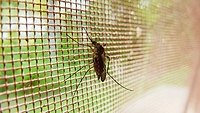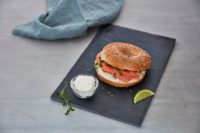The Pitfalls of Product Reformulation and How to Avoid Them

Manufacturers often reformulate their products in response to changes in the price of ingredients, availability of usual supplies or, more recently, government or consumer demands for reduced sugar, salt or fat, or the omission of “chemical preservatives”—a perceived “healthier” alternative. The way that all these trends overlap, for example, products promoting health and well-being with low sugar, fat and salt levels, highlights the major product reformulation challenges most companies face. Reformulating with entirely natural ingredients while maintaining product taste, texture, appearance, functionality, safety and shelf life, and remaining price competitive, can be a major task.
Shaking Up the Sugars and Salts
Although admirable in intention, any changes in those factors that contribute to food safety, stability and quality have in the past, and can still cause, problems in some food industry sectors. Even small changes in formulations can lead to unexpected problems in safety and stability; examples include changes in the levels or types of sugars or salt used in food preservation. Both sugar (generally sucrose but also glucose-fructose syrups) and salt (sodium chloride) contribute to food preservation by reducing the water available to microorganisms for their growth (reduced water activity, a{w}), as well as to taste perceptions in many foods. As the a{w} is lowered with salt or sugars, organisms become dehydrated and their metabolic processes struggle to work efficiently. Organisms may synthesize compatible solutes that enable them to balance the difference in a{w} inside and outside the cell. However, such synthesis requires the cell to use energy it would otherwise use for growth, so growth rate is slowed or inhibited. If growth rate is further stressed, for example, by low pH or inhibitory agents such as nitrite and polyphosphates, then growth may be totally inhibited and the food becomes shelf stable. While the levels of inhibitory agents individually may be high to achieve shelf stability and safety, the combination of these hurdles to growth can lead to additive or synergistic effects with lower levels of each agent. Low pH combined with low a{w} and hot filling in jams and preserves prevent the growth of bacteria and even many yeasts and molds. However, if the sugar level is below approximately 65 percent (w/w) after opening the container, the product should be chilled to slow the growth of osmophilic yeasts and molds that may contact the product—a look at product labels shows this is quite common now.
The lowering of a{w} by either the addition of solutes (salt or sugars) or drying is affected by the number of molecules in solution—a “colligative property.” Grains and cereals are normally dried to below approximately 16 percent (w/w) moisture, which minimizes mold growth. However, moisture migration can occur between warm and cool areas in large silos, permitting mold growth in the areas of raised a{w}. If the a{w} is lowered by a certain concentration of glucose, the same weight of sucrose will not achieve the same lowering of a{w}, as the molecular weight is greater and there will be fewer molecules in solution. This also occurs if the dextrose equivalent (DE) value of sugar syrup is lowered—there are fewer molecules of small-molecular-weight sugars per weight of syrup. Lowering of the DE of a marshmallow mix has permitted the growth of osmophilic yeasts, resulting in exploding marshmallows. These yeasts then became established in the factory; even returning to the original high DE value syrup did not entirely cure the problem—the yeasts had become even more tolerant of low a{w}. Only full cleaning and a further lowering of the a{w} of the marshmallows permitted the production of a stable product.
A similar problem arose when sucrose was replaced with sugar syrups containing glucose and fructose. Wild strains of Zygosaccharomyces bailii cannot ferment sucrose, so replacing sucrose with sugar syrup allowed these yeasts to grow and ferment, causing bottles of soft drinks and squashes to explode. Factory strains of this yeast then became capable of fermenting sucrose, so another method of preservation was needed; for a while, sorbates and/or benzoates were effective, but many strains of yeasts are now resistant to these preservatives.
Preservative Balance Is Key
Fruit flavorings have three preservation characteristics—low pH, low a{w} (with sugars) and pasteurization to eliminate yeasts and molds. Nuts, however, have an intrinsically high pH value (~6.5–6.8). Replacement of sugar with an intense sweetener in a nut purée (for a low-calorie flavoring for yogurt) raises the a{w} considerably. Pasteurization of the product does not destroy bacterial spores, but these cannot grow at low pH and a{w}. Loss of the protective effect of both low pH and a{w} led to cases of botulism in the UK, from yogurt flavored with hazelnut purée.[1] The high pH and high a{w} product would require a full “botulinum cook” for safety (121 °C for 3 minutes).
In combination, several preservative agents may be individually reduced, as there is often some additive or synergistic effect. A combination of hurdles contributing to both stability and safety is exemplified in the preservation of mayonnaises, pickles and sauces: Low pH (by acetic acid), salt and sugar are combined in appropriate concentrations to result in a safe and stable product. Reformulating this type of product, affecting levels of acetic acid, sugars or salt, needs to also involve a proportionate increase in other preservatives to ensure the same degree of product safety and stability. There is an equation that describes the safety and stability of these types of products in terms of the oil-water ratio, pH and quantity of acetic acid, salt and sugars in a formulation[2]; manufacturers of these types of products should be well aware of its use in reformulation. Exchanging citric or lactic acids for acetic for reasons of taste in such products can lead to unstable and unsafe products, as these alternative acids do not provide the same levels of antimicrobial activity. In Spain, during the crisis of Salmonella in eggs, recipes for mayonnaises promoting the use of lemon juice (citric acid) instead of vinegar (acetic acid) led to many cases of salmonellosis from mayonnaise-type products. At equivalent levels of citric acid to acetic acid, Salmonella can survive well, especially if the product is stored in chilled conditions, and can even grow at higher temperatures.[3, 4] In cured meats, salt, nitrite and polyphosphates plus moderately low pH act together to prevent the growth of Clostridium botulinum.
As there was some concern in the 1960s about the formation of carcinogenic nitrosamines by cooking bacon at high temperatures, it was proposed to reduce the levels of nitrite to only that needed to develop the typical color of cured meats, around 10–20 ppm. However, a large multicenter research project in the 1970s–1980s in the UK, investigating the levels of salt, nitrite, polyphosphate, pH and heat process for canned hams, clearly demonstrated that there were minimum levels of and interactions between these ingredients necessary to minimize the likelihood of growth and toxin production by C. botulinum. Mathematical models of botulism risk assessment, based on the levels of these components, were developed from the very large databases of the research programs.[5, 6] However, it was only much later that research work conducted at Leatherhead Food Research showed the metabolic mechanisms of inhibition of botulinum growth and toxin production; nitrite inhibits the phosphoroclastic generation of large amounts of energy from the metabolism of sugars, releasing pyruvate in the process. The presence of salt required the generation of extra energy to synthesize compatible solutes and expel excess sodium ions, and this was denied by the presence of nitrite, so cells died. Clostridium needs to accumulate ferrous ions for inclusion in the electron transport proteins; ferredoxins, with which to generate energy, and the presence of polyphosphates make this much more difficult. Thus, there is an additive or synergistic effect of all these ingredients of cured meats, resulting in improved protection from botulinum growth. However, reductions in the levels of one or more items can result in unstable cured meats; there are still several cases of botulism in Europe each year, involving on-farm or artisanal cured meats in which salt and/or nitrite levels are inadequate; slow salt penetration combined with inadequate chill temperature control is often the fault recognized.
There is a similar but simpler effect in salted and smoked fish, but in most European countries, nitrite is not permitted. The major antibotulinum preservation is by salt levels above 3.5 percent salt-on-water phase, attained by adding salt and drying/smoking as well as chilled storage. Again, if these conditions are not satisfied, there is a risk of botulism for consumers, as evidenced by cases in Eastern Europe and some Mediterranean countries.
Listeria monocytogenes is another pathogen associated with cold-smoked fish (e.g., smoked salmon) and cheeses (mainly soft cheeses) and raw (unpasteurized) hams. This pathogen can grow at high salt concentrations [up to ~10 percent (w/v) salt-on-water] and at low temperatures, thereby posing a risk for these industry sectors. Proper pasteurization of raw milk and good hygiene during cheese manufacture and ripening can control this organism, but this is rather more difficult in cold-smoked fish processing due to the absence of a Critical Control Point that can be used to eliminate the organism. Changing the drying-smoking regimen can encourage the development of lactic acid bacterial flora that can inhibit L. monocytogenes. Addition of protective microflora producing antilisterial bacteriocins and previously isolated from cold-smoked salmon have been shown to minimize growth or eliminate this pathogen.[7, 8]
Risks of Reformulation
Product reformulation needs to start with thorough risk analysis, risk assessment and effective risk management. It is important that we get to know our product well and understand what each ingredient does and contributes in the formulation. Only then can we really know what the safety limits are and make sure that any proposed reformulation can deliver a safe and stable product.
In many different foods, combinations of the intrinsic factors (pH, salt, sugar, preservatives) actively contribute to safety and shelf life. Changing, reducing or eliminating any of these factors must never be undertaken lightly, or there may be an increased risk of food poisoning and/or a reduction in shelf life (i.e., spoilage). The use of mathematical predictive models, such as in ComBase,9 can be a valuable tool to avoid major pitfalls in reformulation, but as the database and equations are still limited in their scope of organisms and preservative systems, it may be necessary to challenge-test with relevant organisms to demonstrate due diligence in safe food manufacture and marketing.
Guidelines for microbiological challenge trials in new product development currently available in the public domain involve a set of generic steps to follow in the preparation of challenge microorganisms, sample inoculation and result interpretation. Microbiological challenge testing requires specific skills, knowledge and expertise to ensure that all those factors able to affect microbial growth, survival and recovery in the product samples are taken into account and appropriately addressed.
There is often confusion around the applicability of microbiological challenge testing versus shelf-life trials.10 In shelf-life analysis, the product is stored under normal conditions and analyzed over time to ensure that it is safe and stable. This approach assumes good manufacturing conditions under a Hazard Analysis and Critical Control Points plan, which would limit the chances of microorganisms, other than the product’s normal background flora (not pathogens), contaminating the product. Therefore, in shelf-life trials, one assumes that analysis will target the naturally present spoilage microflora growing during storage under stipulated conditions. On the other hand, challenge testing is designed to answer the question of whether the product could be safe and stable if accidentally contaminated with pathogenic or spoilage microorganisms—that is, whether a specific product formulation would favor or inhibit their growth. The aim of challenge testing is to simulate what could happen to a product during production, processing, distribution or subsequent handling by consumers following inoculation with relevant microorganism(s) and storage under the representative conditions, from production to consumption.[11]
Design Matters
The trial design must consider such important parameters as the choice of challenge microorganisms, inoculum level and preparation, including preadaptation of the challenge microorganisms to the conditions applicable to the challenge matrix (e.g., adaptation to acetic acid conditions in a mayonnaise-type product), method of product inoculation and its effect on the intrinsic properties of the food matrix to be challenged, storage conditions of the challenged products and trial duration, microbial recovery conditions employed during storage and controls set alongside the inoculated samples. When these trials are designed to confirm the safety of new product formulations, when especially parameters such as levels of sugar, salt, acids and preservatives are affected, false results due to inappropriate trial design can significantly impact the reformulation process and safety of the final product. It is therefore recommended that the challenge trials be designed by expert microbiologists with years of experience and a solid record studying microbial physiology and behavior in foods.
 Evangelia Komitopoulou, Ph.D., is the head of food safety at Leatherhead Food Research. She is recognized for her involvement in the development and validation of microbial detection and antimicrobial assay methodologies as well as the identification and evaluation of novel and natural antimicrobial systems in food preservation. Evangelia has been actively involved in reviewing microbial recovery conditions following different stress applications with particular emphasis on dry environments and has managed a number of projects on microbial attachment on food contact surfaces and the role of quorum sensing on the initial steps of biofilm formation. Evangelia is a member of British Standards Institution AW9 Food Microbiology Committee, which produces and reviews standard microbiological methods in the UK and other European countries.
Evangelia Komitopoulou, Ph.D., is the head of food safety at Leatherhead Food Research. She is recognized for her involvement in the development and validation of microbial detection and antimicrobial assay methodologies as well as the identification and evaluation of novel and natural antimicrobial systems in food preservation. Evangelia has been actively involved in reviewing microbial recovery conditions following different stress applications with particular emphasis on dry environments and has managed a number of projects on microbial attachment on food contact surfaces and the role of quorum sensing on the initial steps of biofilm formation. Evangelia is a member of British Standards Institution AW9 Food Microbiology Committee, which produces and reviews standard microbiological methods in the UK and other European countries.
 Paul Gibbs, Ph.D., is a principal consultant in food safety with over 40 years of experience in food microbiology. Paul is a recognized expert in food spoilage/microbial taint problems, foodborne infections and intoxications including Clostridium botulinum, effects of recipe/ingredient and formulation changes on microbiological stability of foods. Paul has been the coordinator on several EU-funded projects on meat, fish, “sous vide” foods, bottled water and bacteriophage applications.
Paul Gibbs, Ph.D., is a principal consultant in food safety with over 40 years of experience in food microbiology. Paul is a recognized expert in food spoilage/microbial taint problems, foodborne infections and intoxications including Clostridium botulinum, effects of recipe/ingredient and formulation changes on microbiological stability of foods. Paul has been the coordinator on several EU-funded projects on meat, fish, “sous vide” foods, bottled water and bacteriophage applications.
Looking for a reprint of this article?
From high-res PDFs to custom plaques, order your copy today!








